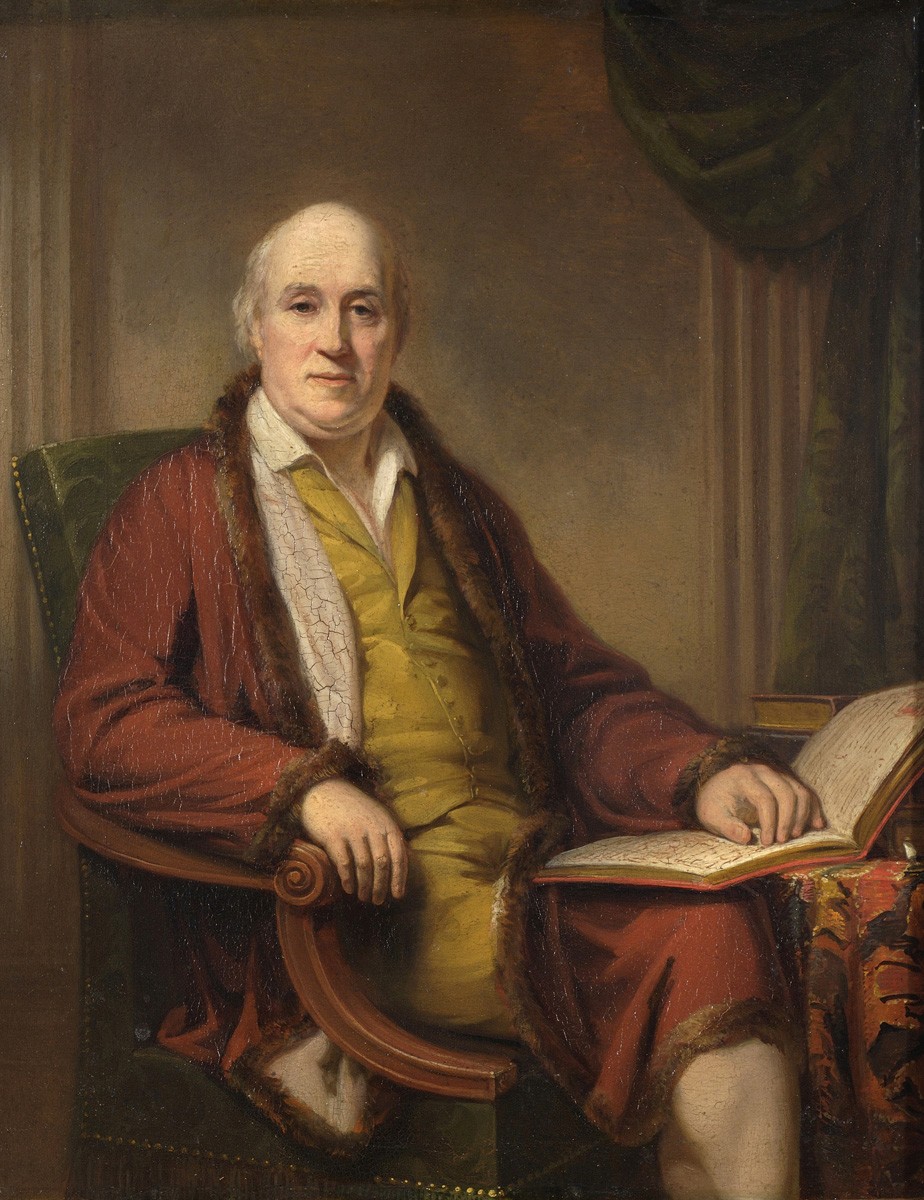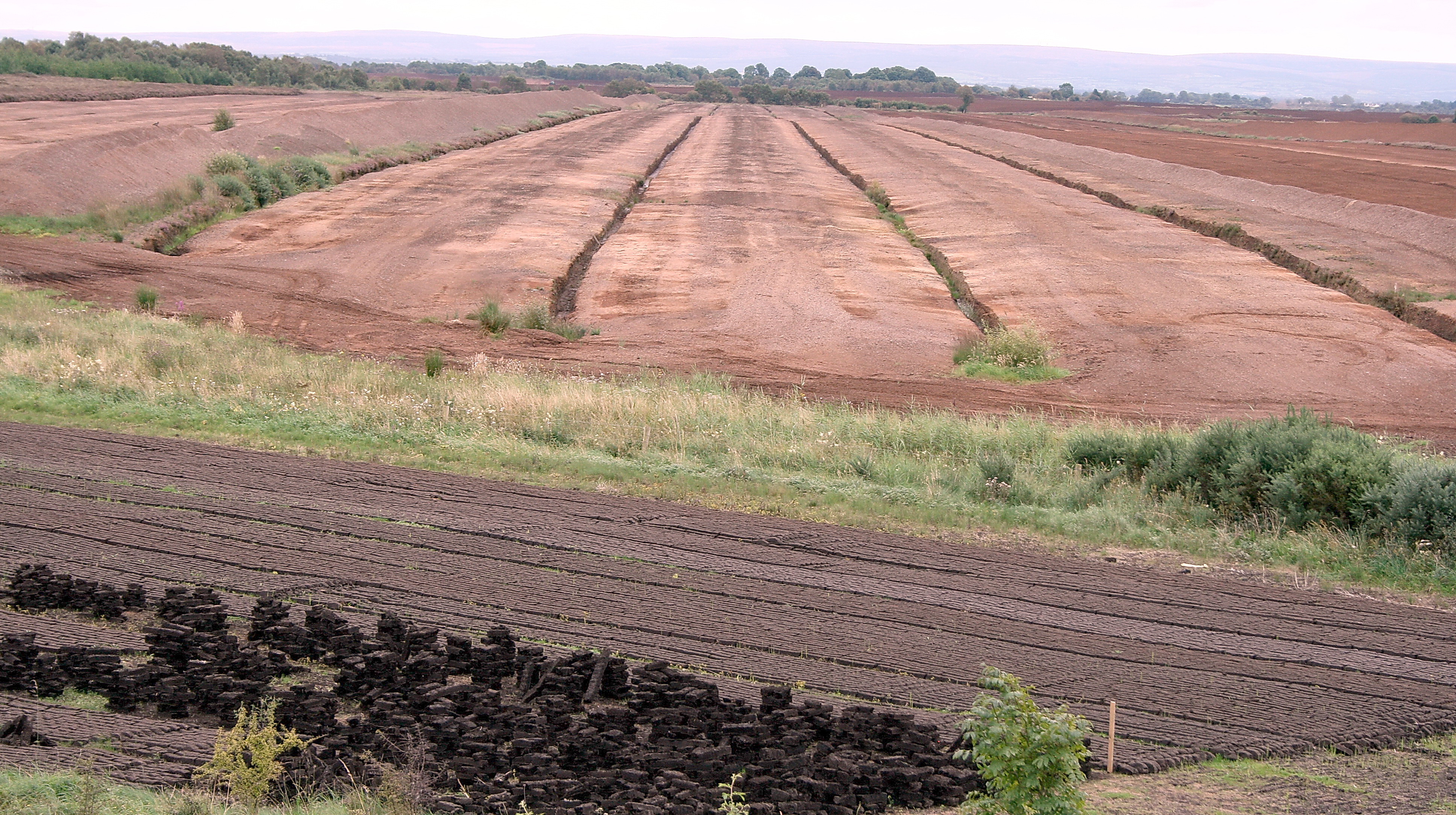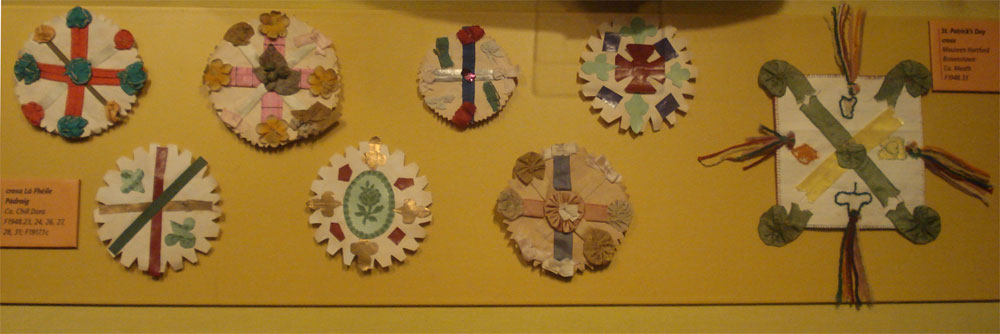|
Fitzwilliam Square
Fitzwilliam Square ( ga, Cearnóg Mhic Liam) is a Georgian garden square in the south of central Dublin, Ireland. It was the last of the five Georgian squares in Dublin to be built, and is the smallest. The middle of the square is composed of a private park, which for more than 200 years has been accessible only to keyholders, mostly the residents and owners of the 69 houses on the square, some of whom pay almost €1,000 a year for the privilege. Fitzwilliam Square East makes up part of Dublin's Georgian mile. History The square was developed by Richard FitzWilliam, 7th Viscount FitzWilliam, hence the name. It was designed from 1789 and laid out in 1792. The centre of the square was enclosed in 1813 through an Act of the Parliament of Ireland. To the north is the much larger Merrion Square, with which Richard FitzWilliam was also involved. The square was a popular place for the Irish Social Season of aristocrats entertaining in Dublin between January and Saint Patrick's Day ... [...More Info...] [...Related Items...] OR: [Wikipedia] [Google] [Baidu] |
Richard FitzWilliam, 7th Viscount FitzWilliam
Richard FitzWilliam, 7th Viscount FitzWilliam (1 August 1745 – 4 February 1816) of Mount Merrion, Dublin, Ireland, and of FitzWilliam House in the parish of Richmond in Surrey, England, was an Anglo-Irish nobleman in the Peerage of Ireland who was a benefactor (law), benefactor and musical antiquarian who founded the Fitzwilliam Museum in Cambridge, England, with a bequest of his library and art collection. He was also a significant urban developer in the City of Dublin. He served as a Member of Parliament (United Kingdom), Member of Parliament for Wilton (UK Parliament constituency), Wilton in Wiltshire, England (not precluded by his Irish peerage), from 1790 until his death. Origins Richard FitzWilliam was baptised on 22 August 1745. He was the eldest son and heir of Richard FitzWilliam, 6th Viscount FitzWilliam (1711-1776) by his wife Catherine Decker, a daughter and co-heiress of Sir Matthew Decker, 1st Baronet (1679-1749) of Richmond, London, Richmond, Surrey, England, a ... [...More Info...] [...Related Items...] OR: [Wikipedia] [Google] [Baidu] |
Irish Social Season
The Irish Social Season was a period of aristocratic entertainment and social functions that stretched from January to St. Patrick's Day of a given year. During this period, the major and minor nobility left their country residences and lived in Georgian mansions in places like Rutland Square (now Parnell Square), Mountjoy Square, Merrion Square and Fitzwilliam Square in Dublin. Those with less financial means lived in (or in some cases rented) smaller properties in streets nearby. The focal point of the Social Season was the move of the Lord Lieutenant of Ireland (the King's representative) from his 'out of season' residence, the Viceregal Lodge (now Áras an Uachtaráin, the residence of the President of Ireland) to live in state in the Viceregal Apartments in Dublin Castle, where he and his wife hosted a series of levées, drawing rooms, banquets and balls in the Castle. The period of the social season also coincided with the parliamentary sessions of the Irish House of Lords, ... [...More Info...] [...Related Items...] OR: [Wikipedia] [Google] [Baidu] |
Squares In Dublin (city)
In Euclidean geometry, a square is a regular quadrilateral, which means that it has four equal sides and four equal angles (90-degree angles, π/2 radian angles, or right angles). It can also be defined as a rectangle with two equal-length adjacent sides. It is the only regular polygon whose internal angle, central angle, and external angle are all equal (90°), and whose diagonals are all equal in length. A square with vertices ''ABCD'' would be denoted . Characterizations A convex quadrilateral is a square if and only if it is any one of the following: * A rectangle with two adjacent equal sides * A rhombus with a right vertex angle * A rhombus with all angles equal * A parallelogram with one right vertex angle and two adjacent equal sides * A quadrilateral with four equal sides and four right angles * A quadrilateral where the diagonals are equal, and are the perpendicular bisectors of each other (i.e., a rhombus with equal diagonals) * A convex quadrilateral with successiv ... [...More Info...] [...Related Items...] OR: [Wikipedia] [Google] [Baidu] |
List Of Streets And Squares In Dublin ...
This is a list of notable streets and squares in Dublin, Ireland. __NOTOC__ References Notes Sources * External linksStreetnames of DublinaArchiseekArchitecture of Ireland— English-Irish list of Dublin street names aLeathanach baile Shéamais Uí Bhrógáin— photographs of multiple or incorrect Irish translations of Dublin street names.1610 Map of Dublinpublished by John Speed ( Perry–Castañeda Library Map Collection) {{Streets in Dublin city, state=autocollapse Streets Dublin Streets Streets is the plural of street, a type of road. Streets or The Streets may also refer to: Music * Streets (band), a rock band fronted by Kansas vocalist Steve Walsh * ''Streets'' (punk album), a 1977 compilation album of various early UK punk ba ... [...More Info...] [...Related Items...] OR: [Wikipedia] [Google] [Baidu] |
Bord Na Móna
Bord na Móna (; English: "The Peat Board"), is a semi-state company in Ireland, created in 1946 by the Turf Development Act 1946. The company began developing the peatlands of Ireland with the aim to provide economic benefit for Irish Midland communities and achieve security of energy supply for the recently formed Irish Republic. The development of peatlands involved the mechanised harvesting of peat, which took place primarily in the Midlands of Ireland. Over the years, Bord na Móna has expanded and diversified its portfolio of businesses to include biomass procurement and supply, power generation (peat based and renewable), waste recovery, domestic fuel products and professional and consumer horticulture products. In 2015, the company announced that the harvesting of peat for power generation is to be "phased out" by 2030, at which point the company would complete its transition to new sustainable businesses located across its bogs and landholding. The new sustainable busi ... [...More Info...] [...Related Items...] OR: [Wikipedia] [Google] [Baidu] |
Recorder Of Dublin
Recorder or The Recorder may refer to: Newspapers * ''Indianapolis Recorder'', a weekly newspaper * ''The Recorder'' (Massachusetts newspaper), a daily newspaper published in Greenfield, Massachusetts, US * ''The Recorder'' (Port Pirie), a newspaper in Port Pirie, South Australia * ''The Amsterdam Recorder'', an American daily newspaper acquired by ''The Daily Gazette'' * ''The Recorder'', a Central Connecticut State University student newspaper * ''The Recorder & Times'', a Canadian daily newspaper Periodicals * '' The Recorder'', a rail transport periodical published by the Australian Railway Historical Society * ''The Recorder'', the journal of the American Irish Historical Society Offices * Recorder (Bible) * Recorder (CSRT), the officer who assembled and presented evidence to Guantanamo Combatant Status Review Tribunals * Recorder (judge), a part-time municipal judge, or the highest appointed legal officer of some local area * Recorder, a clerk who records, or processes r ... [...More Info...] [...Related Items...] OR: [Wikipedia] [Google] [Baidu] |
Thomas O'Shaughnessy
Sir Thomas Lopdell O'Shaughnessy, KC (22 December 1850 – 7 March 1933) was the last Recorder of Dublin in Ireland. Early life O'Shaughnessy was born on 22 December 1850 in Dublin, son of Thomas O'Shaughnessy and Mary Lopdell. He married Catherine Trueman in 1879 and they had four children. He died at his home in Fitzwilliam Square, Dublin on 7 March 1933. Educated at Queens College Galway, he was called to the Irish Bar in 1874 and to the English Bar by Middle Temple in 1894. Legal career O'Shaughnessy carried out his practice on the Connaught and North Eastern Circuit. He served as counsel to the plaintiffs in relation to the disastrous rail accident during a school outing from Armagh to Newry. O'Shaughnessy won a great reputation from this trial, and took silk (an informal term for Queen's Counsel) soon after. For fifteen years, he was one of the most influential, effective and well-paid barristers of the Dublin Four Courts, and was regarded as a mentor to younger barris ... [...More Info...] [...Related Items...] OR: [Wikipedia] [Google] [Baidu] |
Bloody Sunday (1920)
Bloody Sunday ( ga, Domhnach na Fola) was a day of violence in Dublin on 21 November 1920, during the Irish War of Independence. More than 30 people were killed or fatally wounded. The day began with an Irish Republican Army (IRA) operation, organised by Michael Collins, to assassinate the "Cairo Gang" – a group of undercover British intelligence agents working and living in Dublin. IRA operatives went to a number of addresses and killed or fatally wounded 15 men. Most were British Army officers, one was a Royal Irish Constabulary (RIC) sergeant, and two were Auxiliaries responding to the attacks. At least two civilians were killed, but the status of some of those killed is unclear. Five others were wounded. The assassinations sparked panic among the British authorities, and many British agents fled to Dublin Castle for safety. Later that afternoon, British forces raided a Gaelic football match in Croke Park. British RIC members called "Black and Tans", Auxiliaries, and Bri ... [...More Info...] [...Related Items...] OR: [Wikipedia] [Google] [Baidu] |
Saint Patrick's Day
Saint Patrick's Day, or the Feast of Saint Patrick ( ga, Lá Fhéile Pádraig, lit=the Day of the Festival of Patrick), is a cultural and religious celebration held on 17 March, the traditional death date of Saint Patrick (), the foremost patron saint of Ireland. Saint Patrick's Day was made an official Christian feast day in the early 17th century and is observed by the Catholic Church, the Anglican Communion (especially the Church of Ireland), the Eastern Orthodox Church, and the Lutheran Church. The day commemorates Saint Patrick and the arrival of Christianity in Ireland, and celebrates the heritage and culture of the Irish in general. Celebrations generally involve public parades and festivals, céilithe, and the wearing of green attire or shamrocks. Christians who belong to liturgical denominations also attend church services and historically the Lenten restrictions on eating and drinking alcohol were lifted for the day, which has encouraged and propagated the holida ... [...More Info...] [...Related Items...] OR: [Wikipedia] [Google] [Baidu] |
Merrion Square
Merrion Square () is a Georgian garden square on the southside of Dublin city centre. History The square was laid out in 1752 by the estate of Viscount FitzWilliam and was largely complete by the beginning of the 19th century. The demand for such Georgian townhouse residences south of the River Liffey had been fuelled by the decision of the then Earl of Kildare (later the Duke of Leinster) to build his Dublin home on the then undeveloped southside. He constructed the largest aristocratic residence in Dublin, Leinster House, second only to Dublin Castle. As a result of this construction, three new residential squares appeared on the Southside: Merrion Square (facing the garden front of Leinster House), St Stephen's Green, and the smallest and last to be built, Fitzwilliam Square. Aristocrats, bishops and the wealthy sold their northside townhouses and migrated to the new southside developments. Legacy All the original 18th century properties in Merrion Square have survived ... [...More Info...] [...Related Items...] OR: [Wikipedia] [Google] [Baidu] |
Dublin
Dublin (; , or ) is the capital and largest city of Republic of Ireland, Ireland. On a bay at the mouth of the River Liffey, it is in the Provinces of Ireland, province of Leinster, bordered on the south by the Dublin Mountains, a part of the Wicklow Mountains range. At the 2016 census of Ireland, 2016 census it had a population of 1,173,179, while the preliminary results of the 2022 census of Ireland, 2022 census recorded that County Dublin as a whole had a population of 1,450,701, and that the population of the Greater Dublin Area was over 2 million, or roughly 40% of the Republic of Ireland's total population. A settlement was established in the area by the Gaels during or before the 7th century, followed by the Vikings. As the Kings of Dublin, Kingdom of Dublin grew, it became Ireland's principal settlement by the 12th century Anglo-Norman invasion of Ireland. The city expanded rapidly from the 17th century and was briefly the second largest in the British Empire and sixt ... [...More Info...] [...Related Items...] OR: [Wikipedia] [Google] [Baidu] |
Parliament Of Ireland
The Parliament of Ireland ( ga, Parlaimint na hÉireann) was the legislature of the Lordship of Ireland, and later the Kingdom of Ireland, from 1297 until 1800. It was modelled on the Parliament of England and from 1537 comprised two chambers: the House of Commons and the House of Lords. The Lords were members of the Irish peerage (’lords temporal’) and bishops (’ lords spiritual’; after the Reformation, Church of Ireland bishops). The Commons was directly elected, albeit on a very restricted franchise. Parliaments met at various places in Leinster and Munster, but latterly always in Dublin: in Christ Church Cathedral (15th century),Richardson 1943 p.451 Dublin Castle (to 1649), Chichester House (1661–1727), the Blue Coat School (1729–31), and finally a purpose-built Parliament House on College Green. The main purpose of parliament was to approve taxes that were then levied by and for the Dublin Castle administration. Those who would pay the bulk of taxation, ... [...More Info...] [...Related Items...] OR: [Wikipedia] [Google] [Baidu] |






